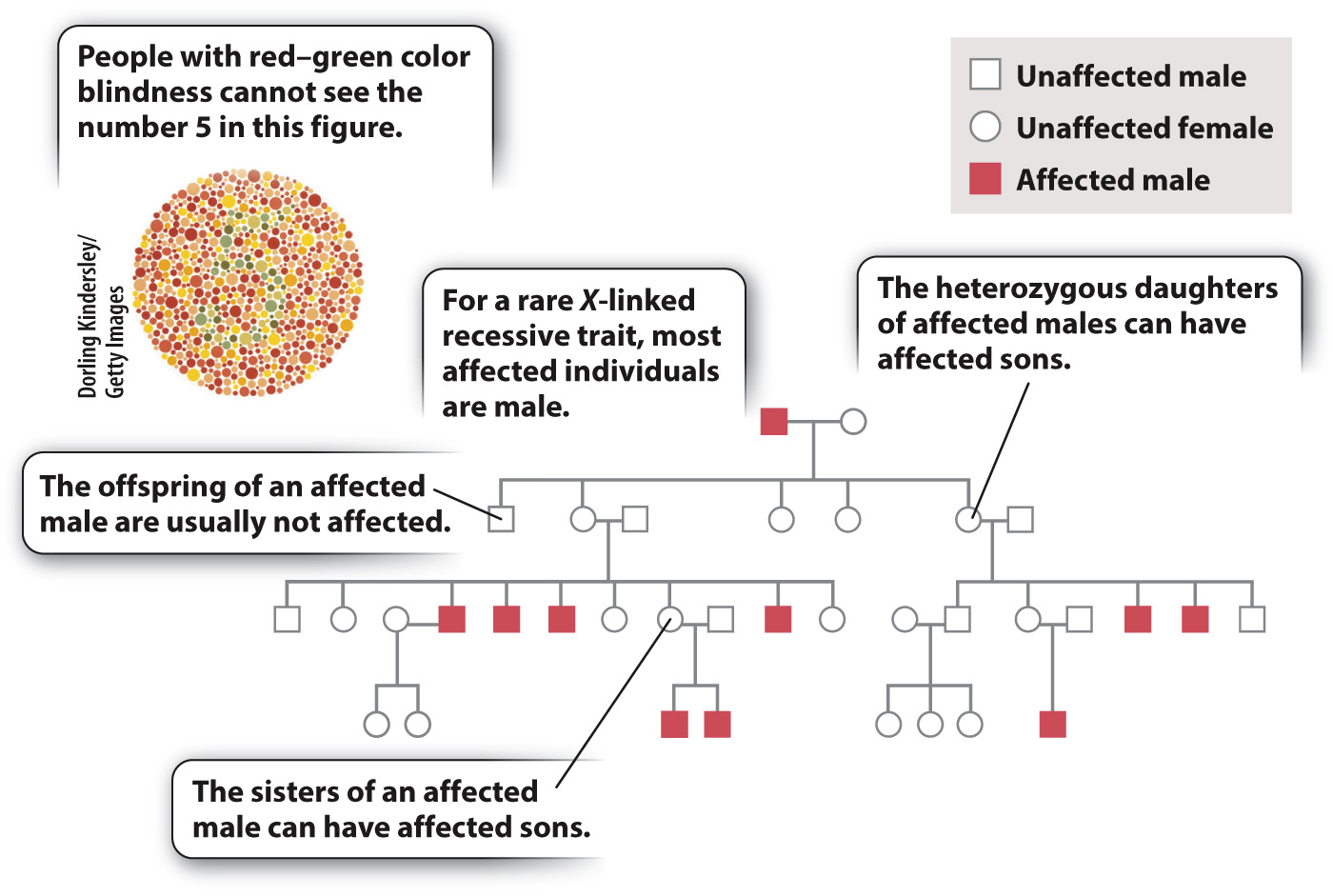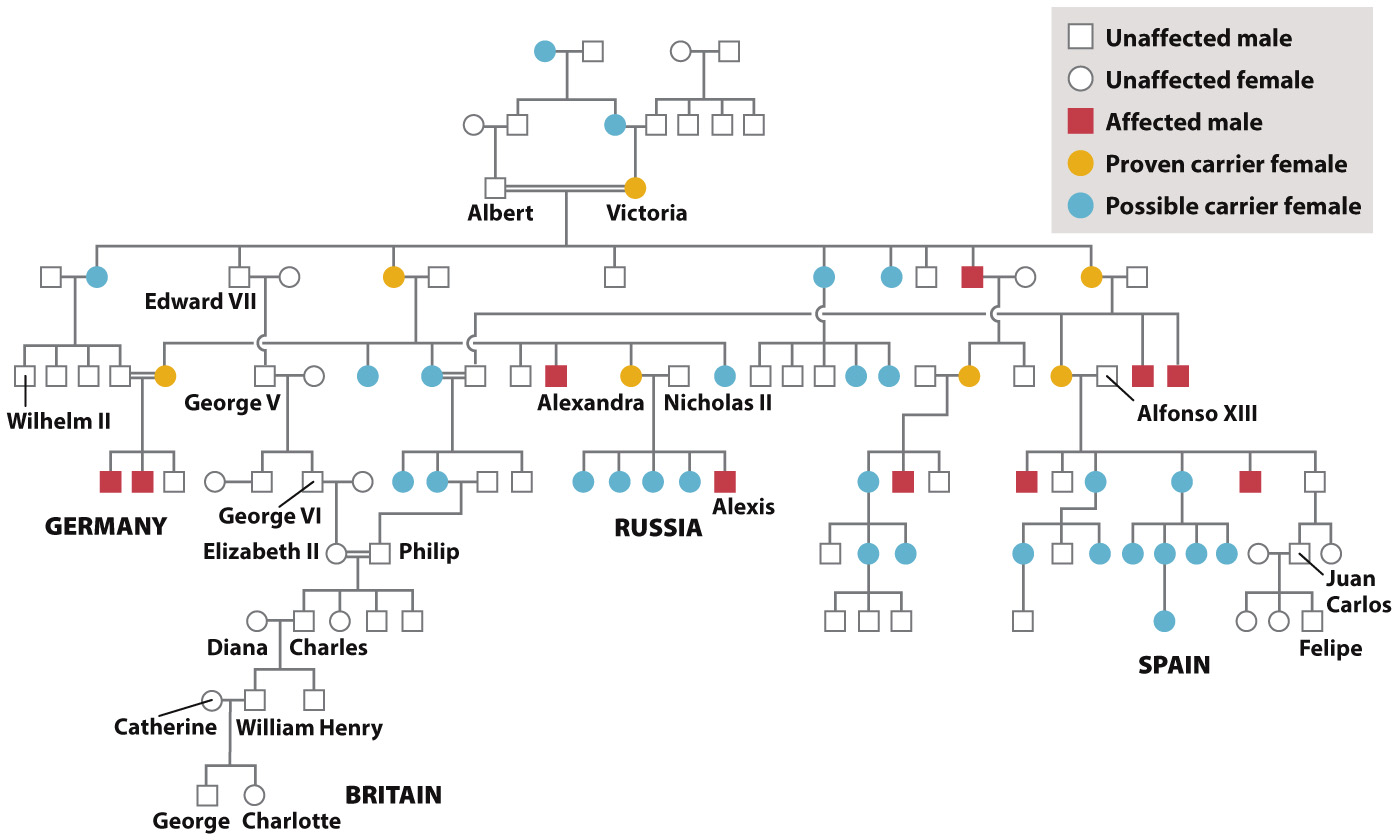Genes in the X chromosome show characteristic patterns in human pedigrees.
The features of X-

The key features of the inheritance of traits due to rare X-linked recessive alleles, which are noted in the pedigree, are listed here:
- Affected individuals are usually males because males need only one copy of the mutant gene to be affected, whereas females need two copies to be affected.
- Affected males have unaffected sons because males transmit their X chromosome only to their daughters.
- A female whose father is affected can have affected sons because such a female must be a heterozygous carrier of the recessive mutant allele.
An additional feature worth mentioning is that the sisters of an affected male each have a 50% chance of being a heterozygous carrier because when a brother is affected the mother must be heterozygous for the recessive allele.
Quick Check 1 Is it possible for an unaffected female to have female offspring with red–
Quick Check 1 Answer
A woman whose father is color blind must be heterozygous for the mutant allele. If she has children with a man who is color blind, then half of the female offspring are expected to be homozygous mutant and therefore color blind.
A pedigree for one of the most famous examples of human X-

The source of Queen Victoria’s hemophilia mutation is not known. None of her ancestors is reported as having a bleeding disorder. Quite possibly the mutation was present for a few generations before Victoria was born but remained hidden because it was passed from heterozygous female to heterozygous female.